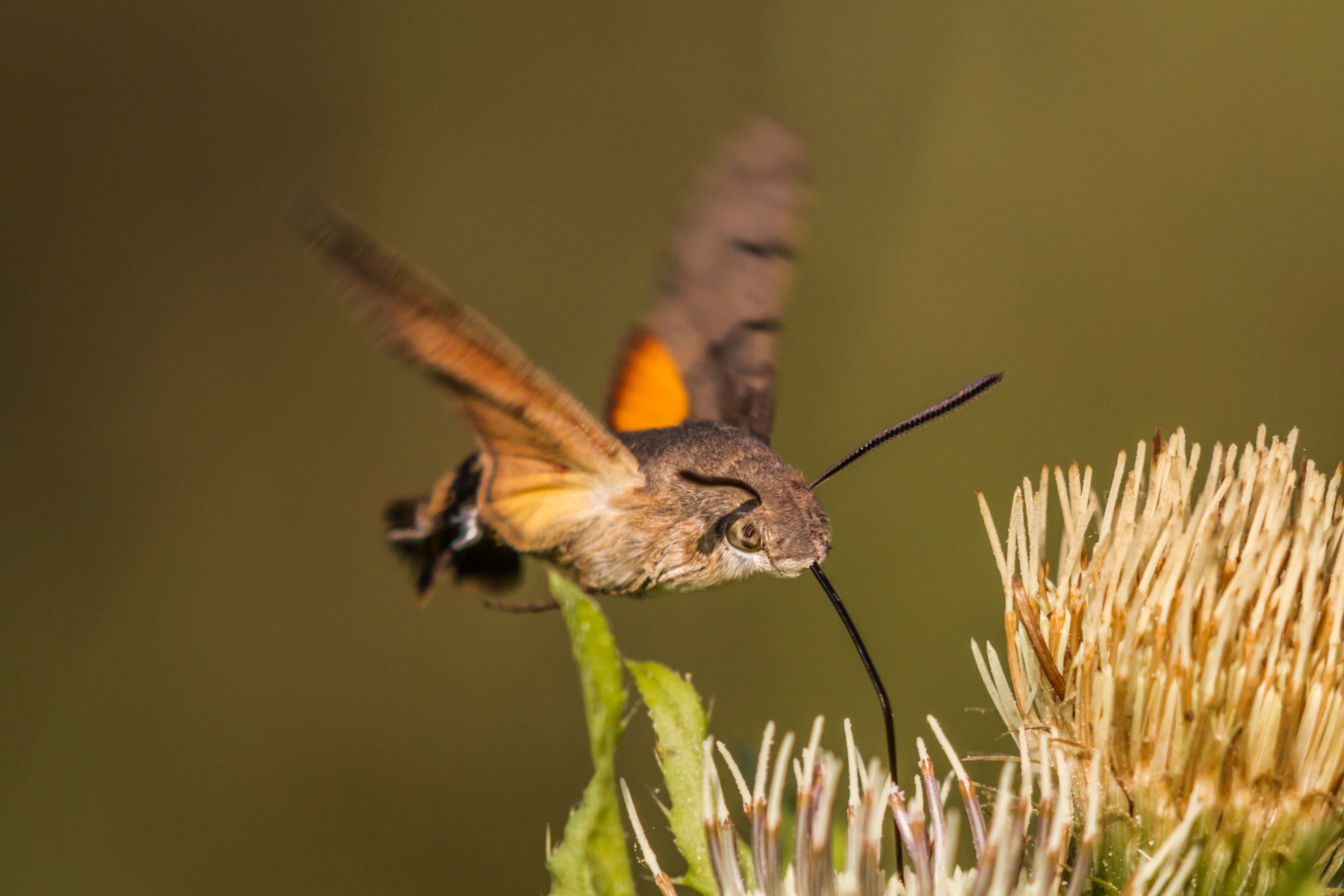Hummingbird hawk-moth
(Macroglossum stellatarum)

Description
The hummingbird hawk-moth (Macroglossum stellatarum) is a species of hawk moth found across temperate regions of Eurasia. The species is named for its similarity to hummingbirds, as they feed on the nectar of tube-shaped flowers using their long proboscis while hovering in the air; this resemblance is an example of convergent evolution. The hummingbird hawk-moth was first described by Carl Linnaeus in his 1758 10th edition of Systema Naturae. As of 2018, its entire genome and mitogenome have been sequenced. The hummingbird hawk-moth is distributed throughout the northern Old World from Portugal to Japan, but it breeds mainly in warmer climates (southern Europe, North Africa, and points east). Three generations are produced in a year in Spain. It is a strong flier, dispersing widely in the summer. However it rarely survives the winter in northern latitudes (e.g. north of the Alps in Europe, north of the Caucasus in Russia). Moths in the genus Hemaris, also of the family Sphingidae, are known as "hummingbird moths" in the US, and "bee moths" in Europe. This sometimes causes confusion between this species and the North American genus. Two or more broods are produced each year. The adult may be encountered at any time of the year, especially in the south of the range, where there may be three or four broods. It overwinters as an adult in a crevice among rocks, trees, and buildings. On very warm days it may emerge to feed in mid-winter. Unlike other moths, they have no sexual dimorphism in the size of their antennal lobes. The glossy pale green ova (eggs) are spherical with a 1-millimetre (0.039 in) diameter. They are said to look like the flower buds of the host plant Galium, and that is where the female lays them. They hatch 6 to 8 days after laying. Up to 200 eggs may be laid by one female, each on a separate plant. Newly hatched larvae are clear yellow, and in the second instar assume their green coloration. The larva is green with two grey stripes bordered in cream along the sides and with a horn at the rear end typical of sphingids. The horn is purplish red, changing to blue with an orange tip in the last instar. They feed fully exposed on the top of the host plant and rest in among a tangle of stems. Although dependent on warmth and sun, the larval stage can be as rapid as 20 days.
Taxonomic tree:







